A company that deals with sales have a lot of scenarios. Marketing a company's product. After placing an order for products, the customer has paid the company for their purchase. When it comes to a sale order, this is the deal between the company and customers. Customers have two options for paying their bills. Consumers can pay the complete sum in one transaction or pay their invoices in installments if they like.
Odoo also assists us in managing such installment payments. We can execute this using the down payment mechanism.
We can sell products through the company and a retail store when a customer placed a large order with our company and chooses to pay the entire bill in three installments. As a result, select the down payment method.
Let's have a look at the scenarios mentioned above. As a result, a client has made a sale order from the company.
Choose to use a sales module. From there, you can make a new quotation. A list of all the sale orders that have been created is accessible. To begin a new one, click the Create button.
A customer and products are added to the sales order as it is being generated. James, the customer, placed an order for two products totaling $4000. Let's make sure the order is confirmed. He has now placed a sale order with the company.
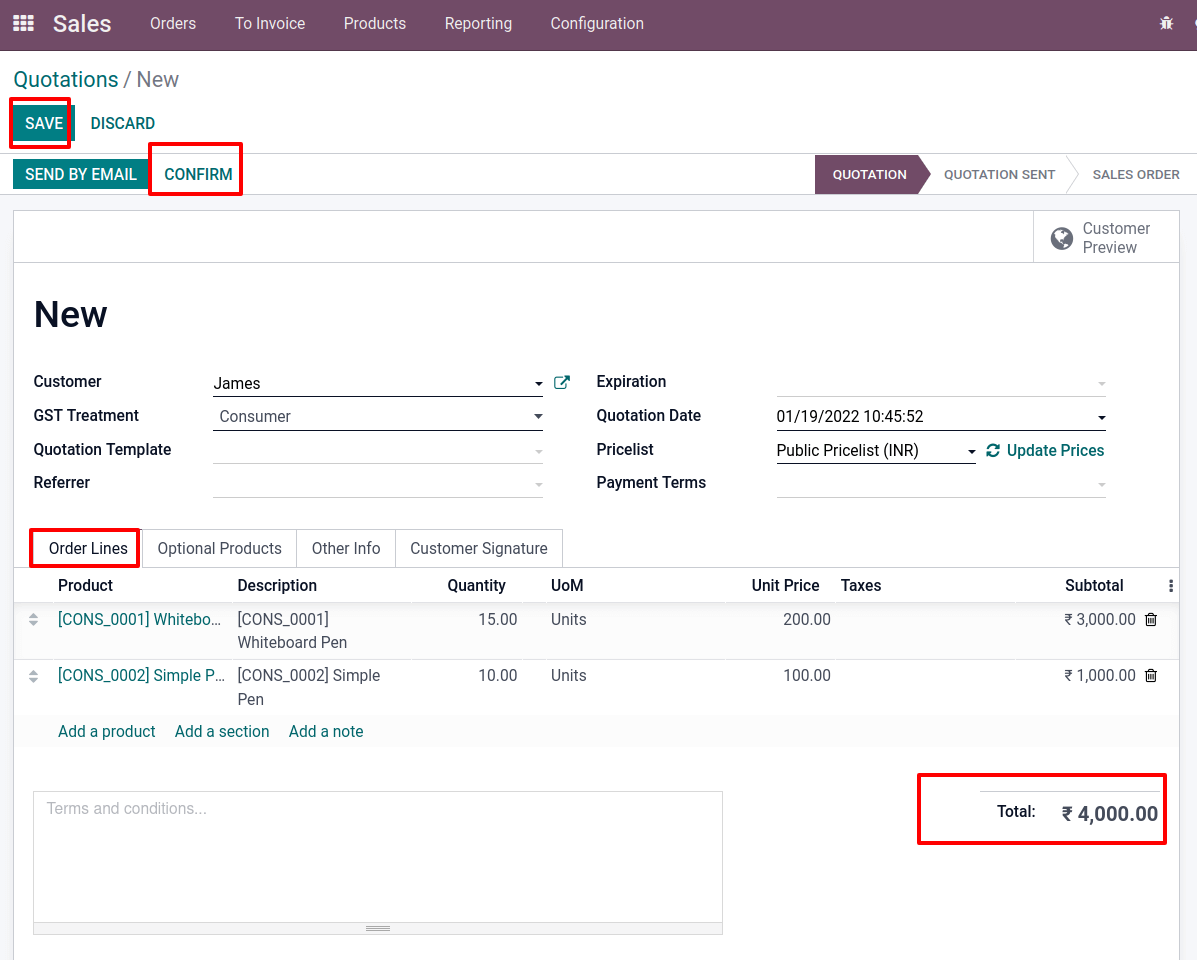
The products are reserved for sale after the order has been confirmed. Then there was a Delivery. This indicates that the product is ready to ship. As a result, the customer desires to pay for the order.
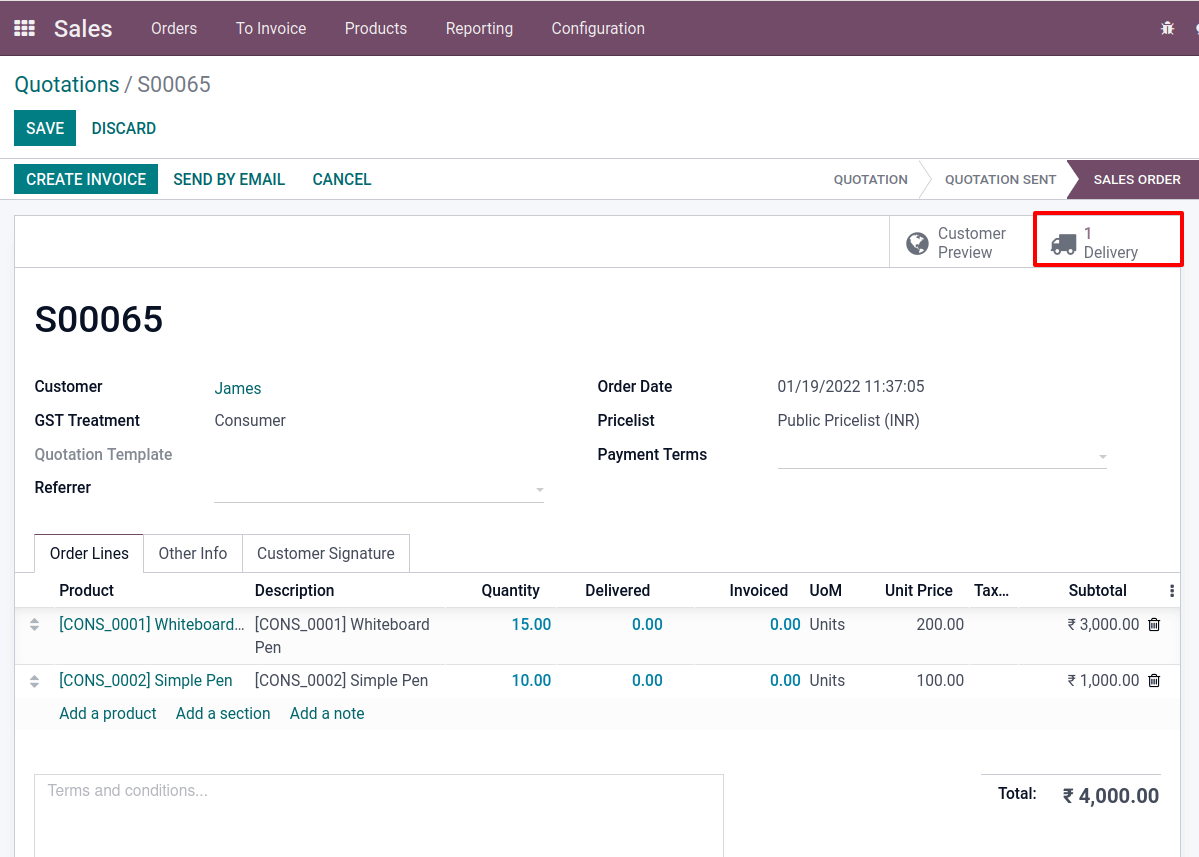
However, he collects things and pays for them in a retail store, equivalent to one of our Point of Sale sessions. Let's go on to the Point-of-Sale session. Choose the Point of Sale module. We can see the sessions that have been created there. We can either establish a new session or use one that already exists. Go to Configuration and pick Point of Sale from the list to create a new one. After that, select the "Create" menu from that page.
: Configuration > Point of Sale > Create

When creating a new PoS session, give it a name. For example, create a session called New Shop. From there, we'd just want to add a Down Payment Product and a down payment that will be added to the order line. A service product must be used as a down payment.
Save the session after you've made your modifications.
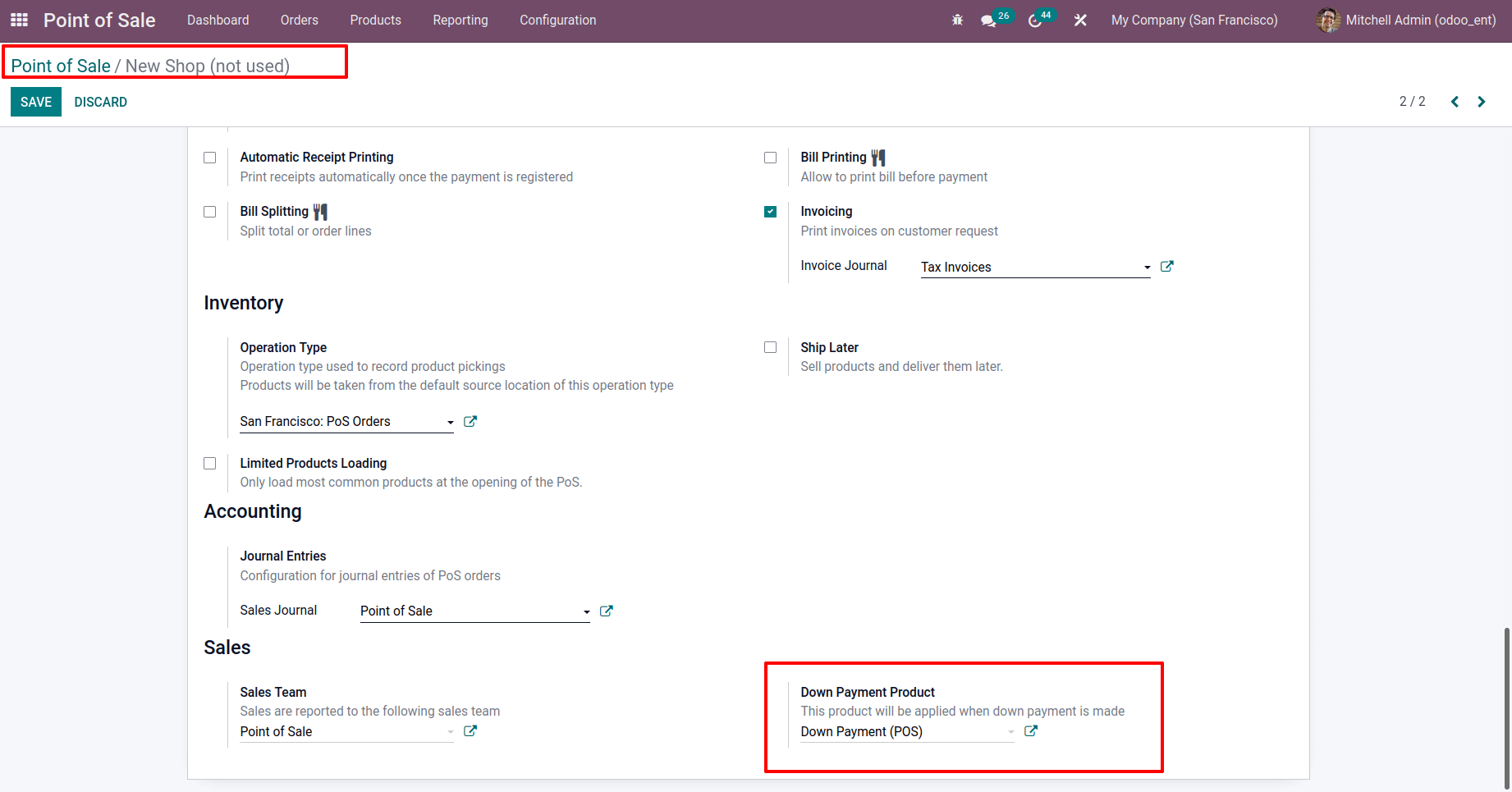
On the dashboard, we can see the newly formed Point of Session.
We can then begin a new session from there. Click on the button NEW SESSION

Let's suppose this is something like a retail store. As a result, the sale order we created in the sales module is shown here.
It is also feasible to make down payments from this point. So, let's click the button Quotation/Order to acquire the created order.
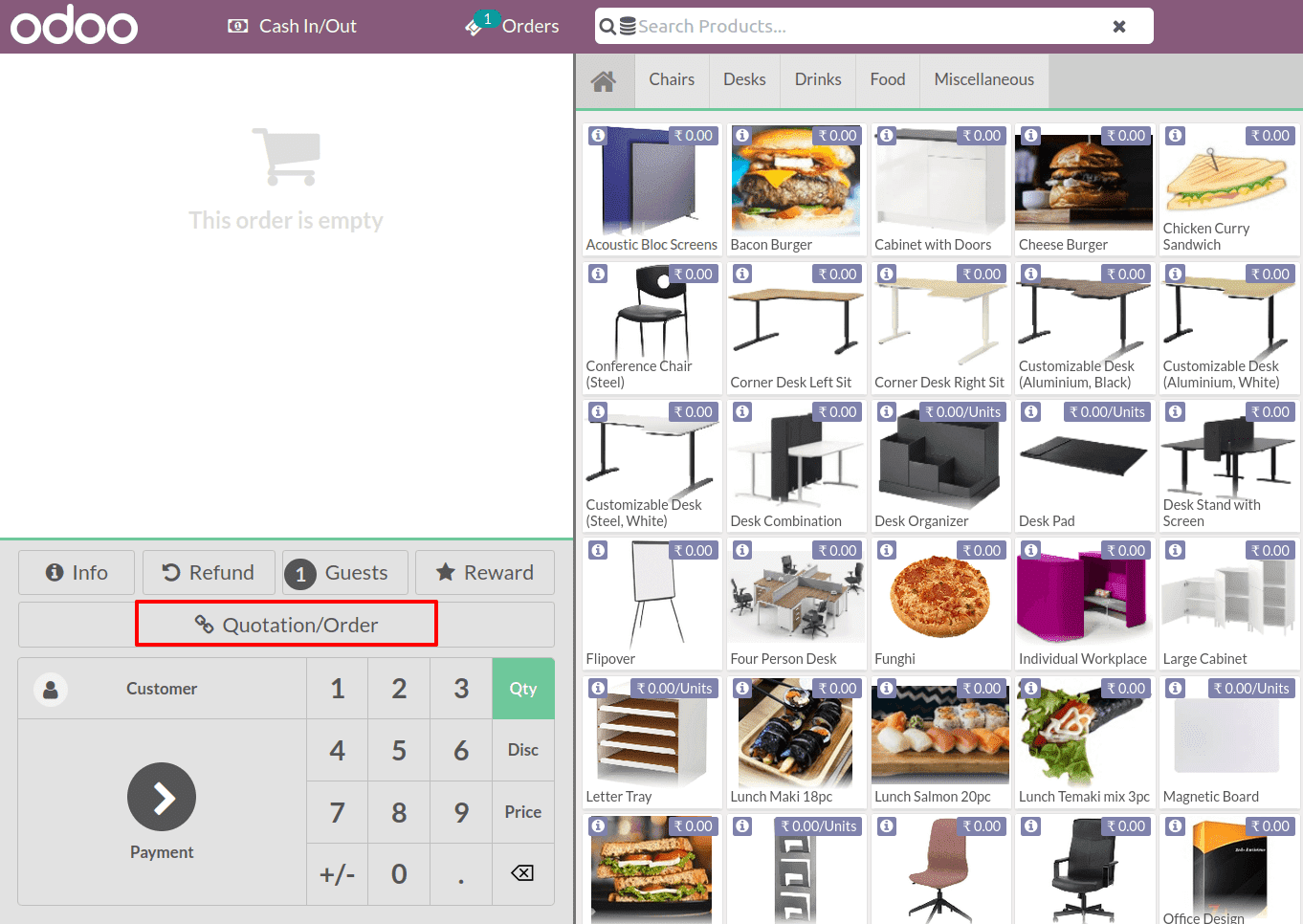
A list of orders and quotations is displayed, including the order number, customer name, salesperson, and total amount. We can select our customer's orders from the list

Then a small window appears and asks us a question.
What do you want to do?
There are two possibilities displayed. The first choice is to make a down payment, and the second is to settle the order. We can add the whole amount at once by selecting the option to settle the order. However, if we choose the first option, Apply for a down payment, we can make down payments.
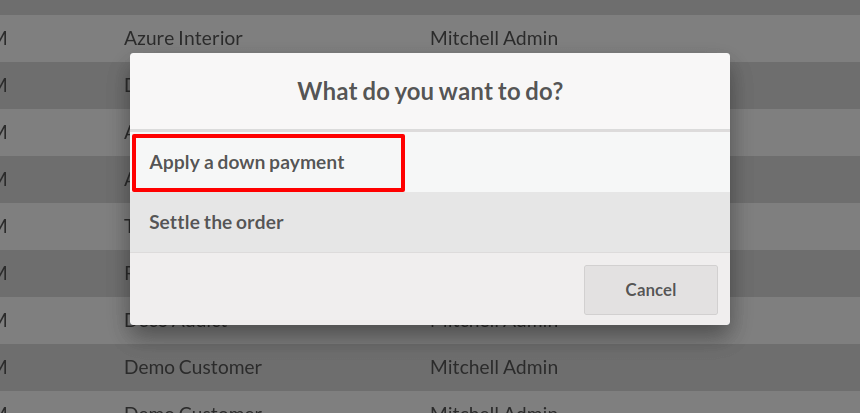
A new window appears, and we can enter the payment amount there. That is to say; it displays the whole amount of the order. As a result, the down payment percentage can be mentioned here. Now that our client has a $4000 order, he has paid 25% of that amount for the first time. Then press the OK button
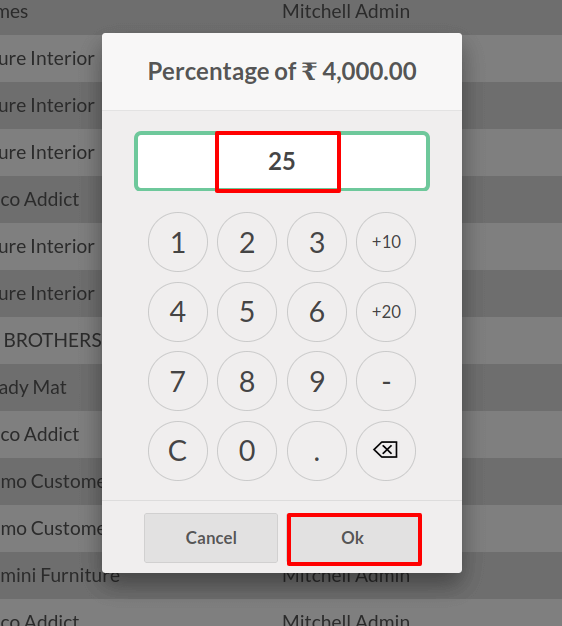
The down payment will then be applied to the order line. The displayed price is 25% of the total amount. Let's just get started on paying the bill.
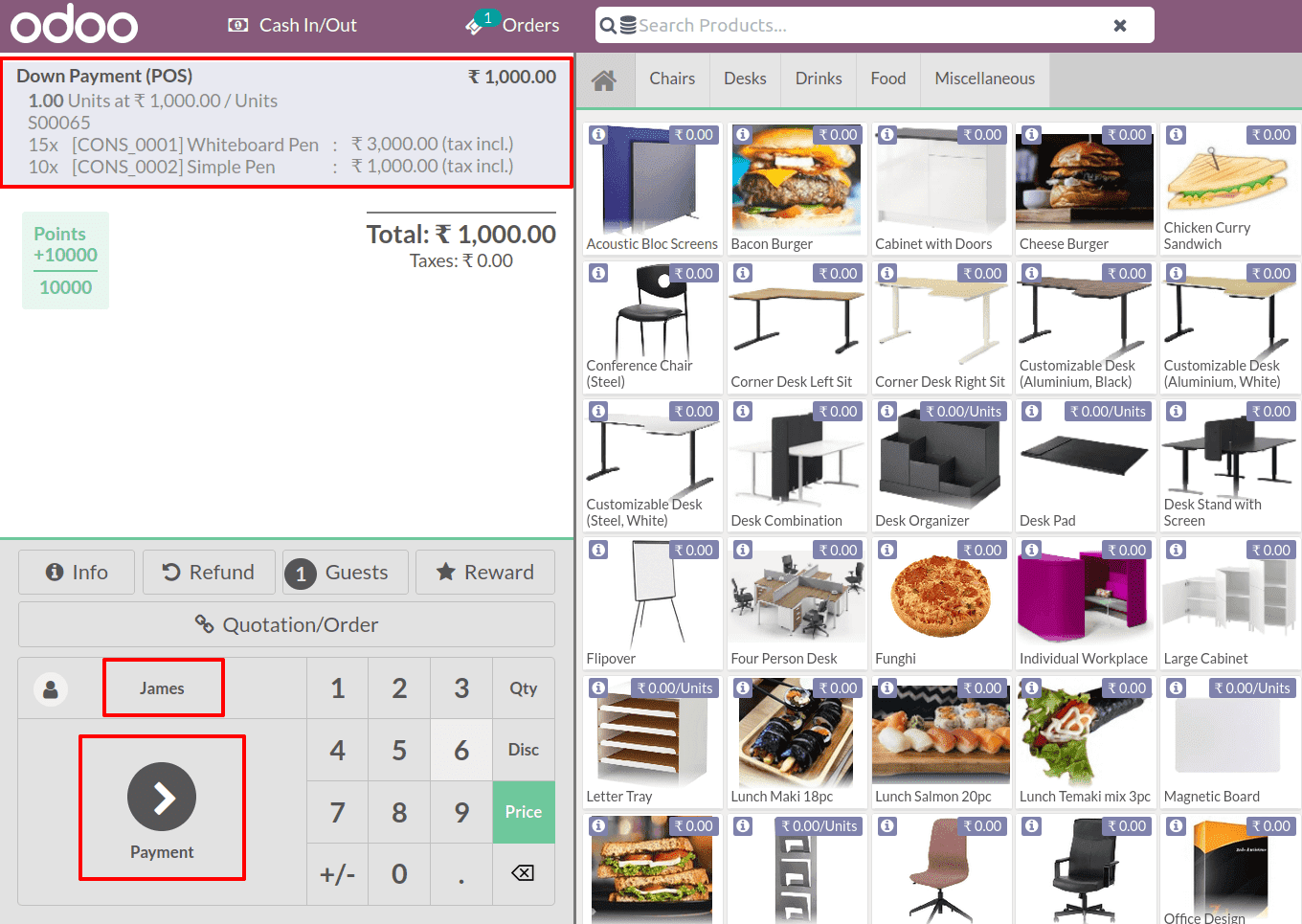
Click the Payment button to do so. After that, select a payment option and confirm it.
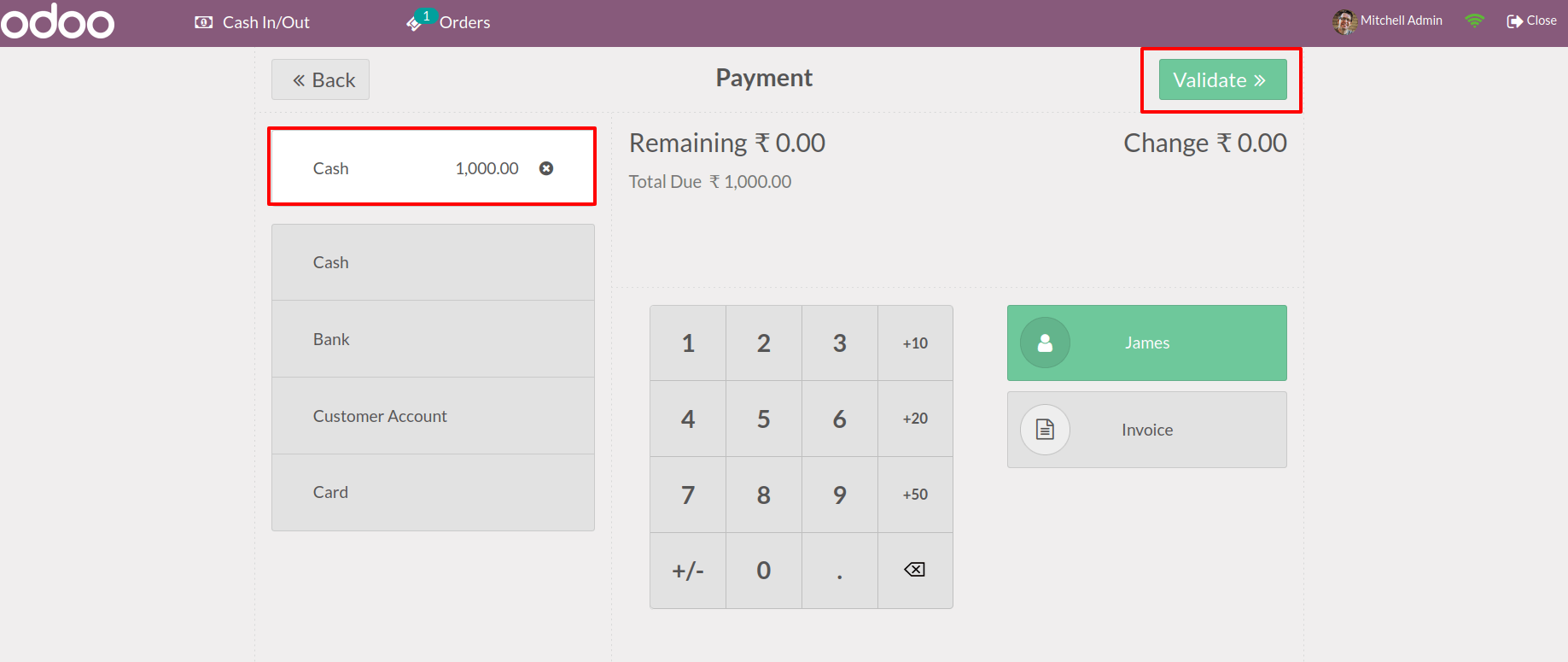
The first down payment is then made. We must end the session before proceeding to the next payment to the same consumer. Because any session changes are only updated once the session is closed, consider a later period the customer is making another down payment for the same order.
The customer can pay the second down payment in the same way. So, let's start over with the same session select Quotations/Order from the menu. Then you'll see a list of orders.
Choose our customer from the list and make a down payment. Then, as a down payment, 40 percent of the total is chosen, then press the "OK" button.
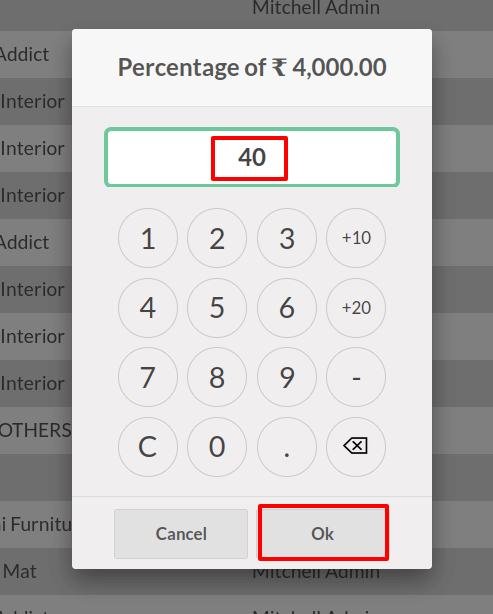
The payment is subsequently added to the order line. Choose one option to pay and complete the transaction.
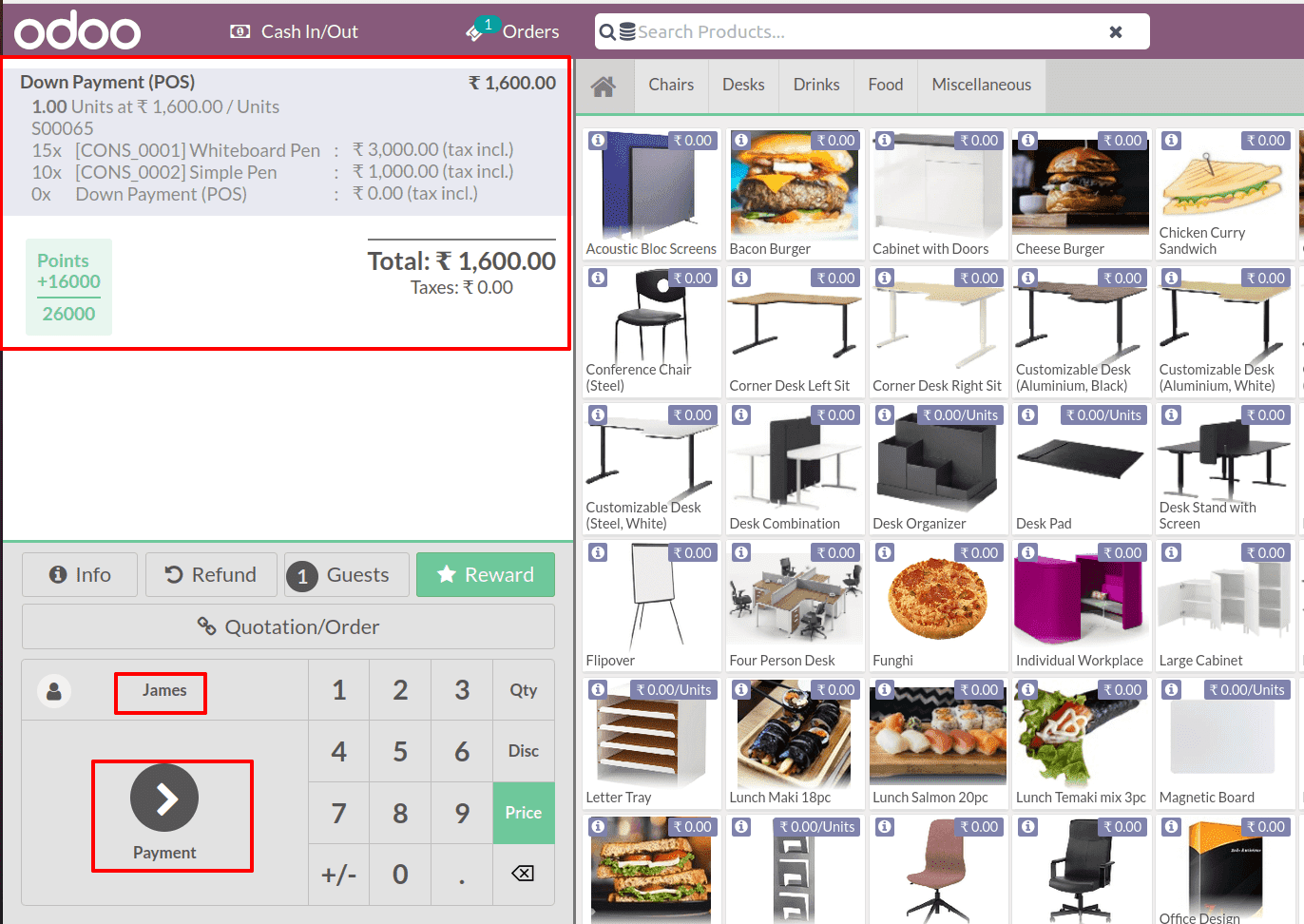
In this situation, the buyer made $2600 as a down payment. Let's look at the sales order initially done in the sales module.
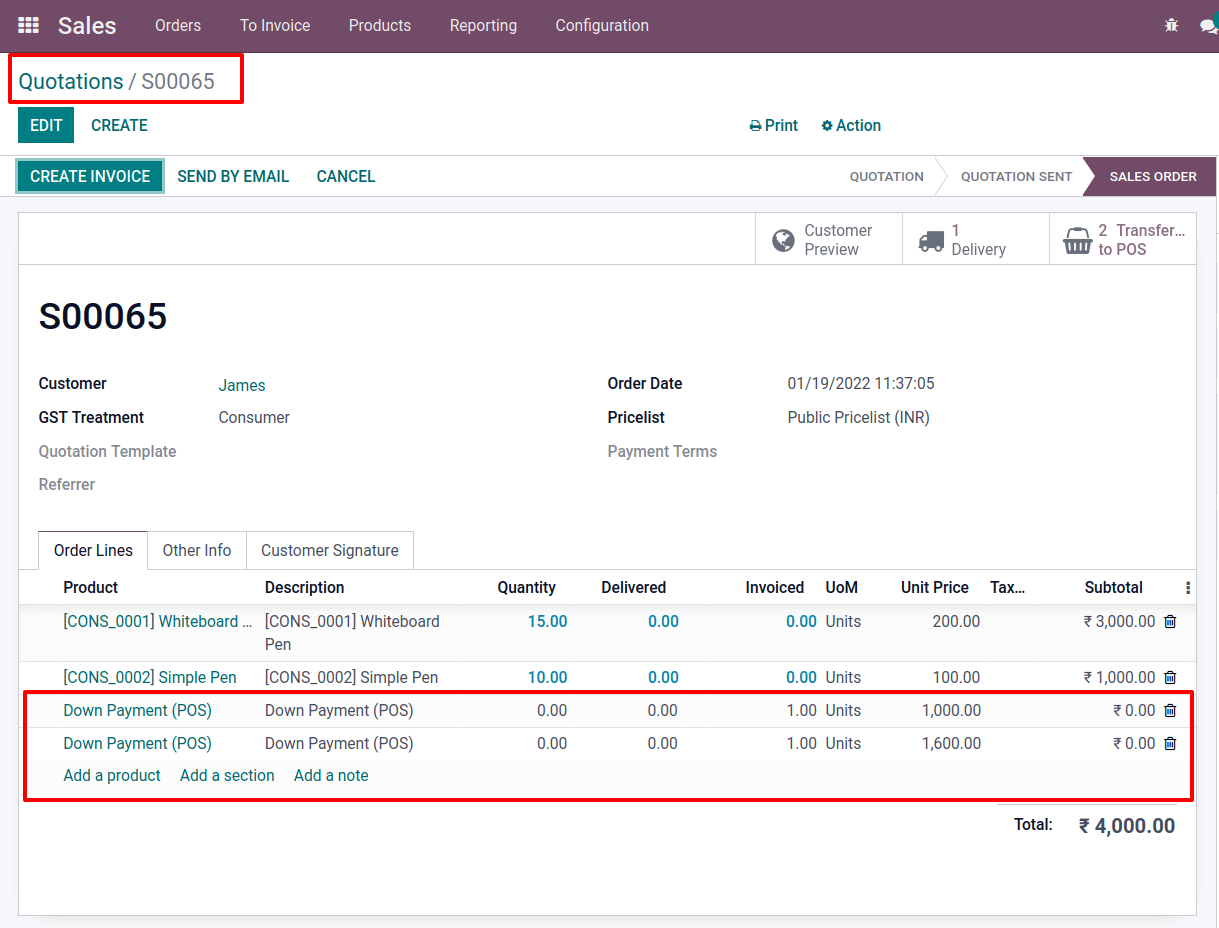
The customer can then settle the balance amount only once. Return to the Point of Sale to complete this task, and then reopen the previously utilized session by clicking on the quotation/order; you can select the same order. Then, from the drop-down menu, select the second option. Settle the order.
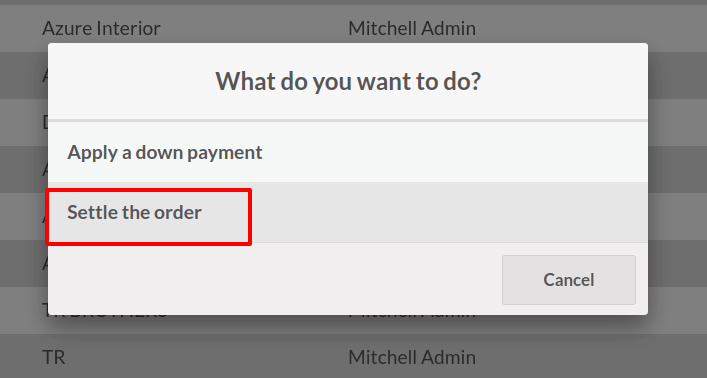
The order line is displayed, and products are added here. The previously made down payments are shown as negative figures, indicating that the down payment amounts have been deducted from the total sum. The remaining balance is marked as payable.
I was making a payment.
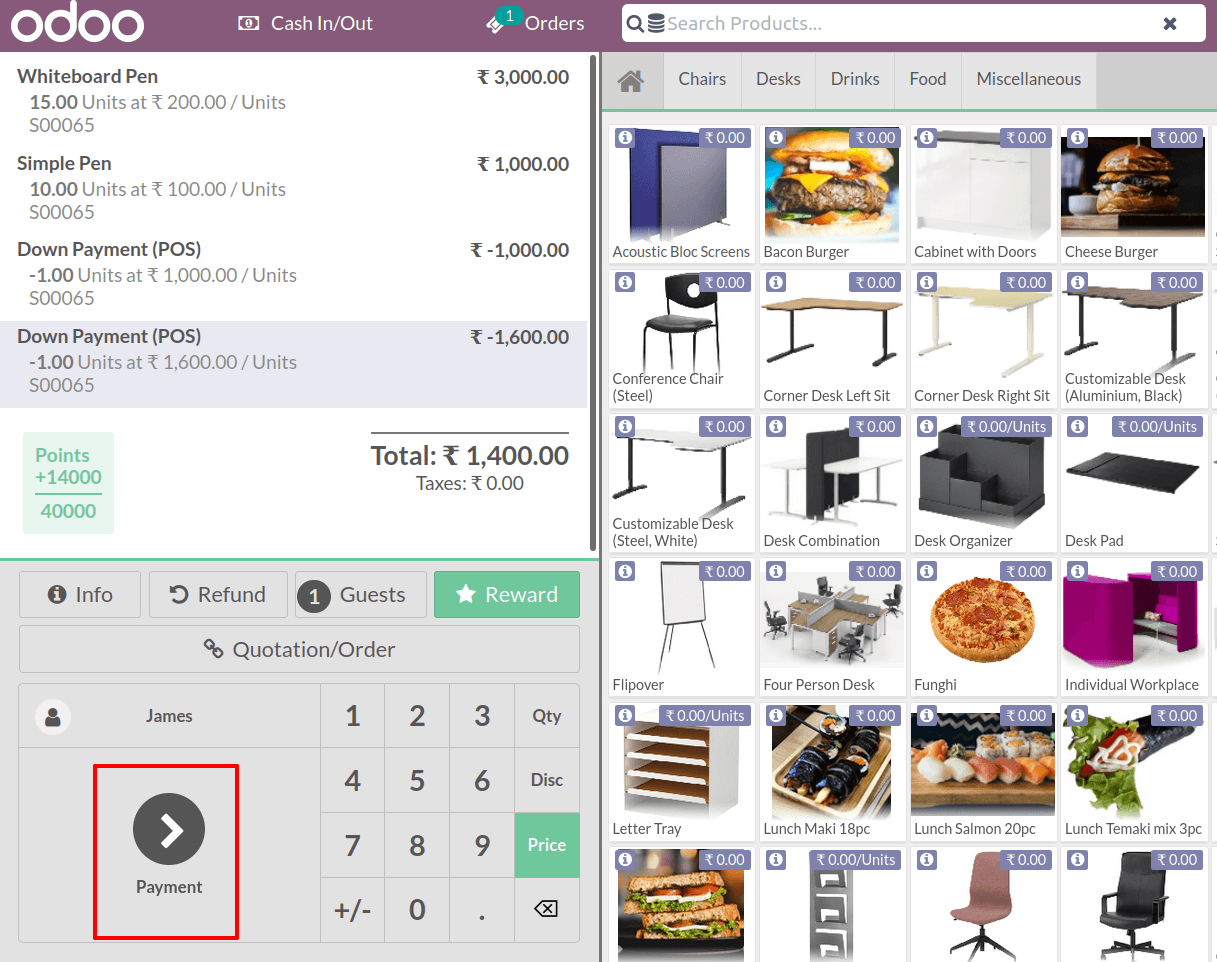
From there, select a payment option, and validate the payment.
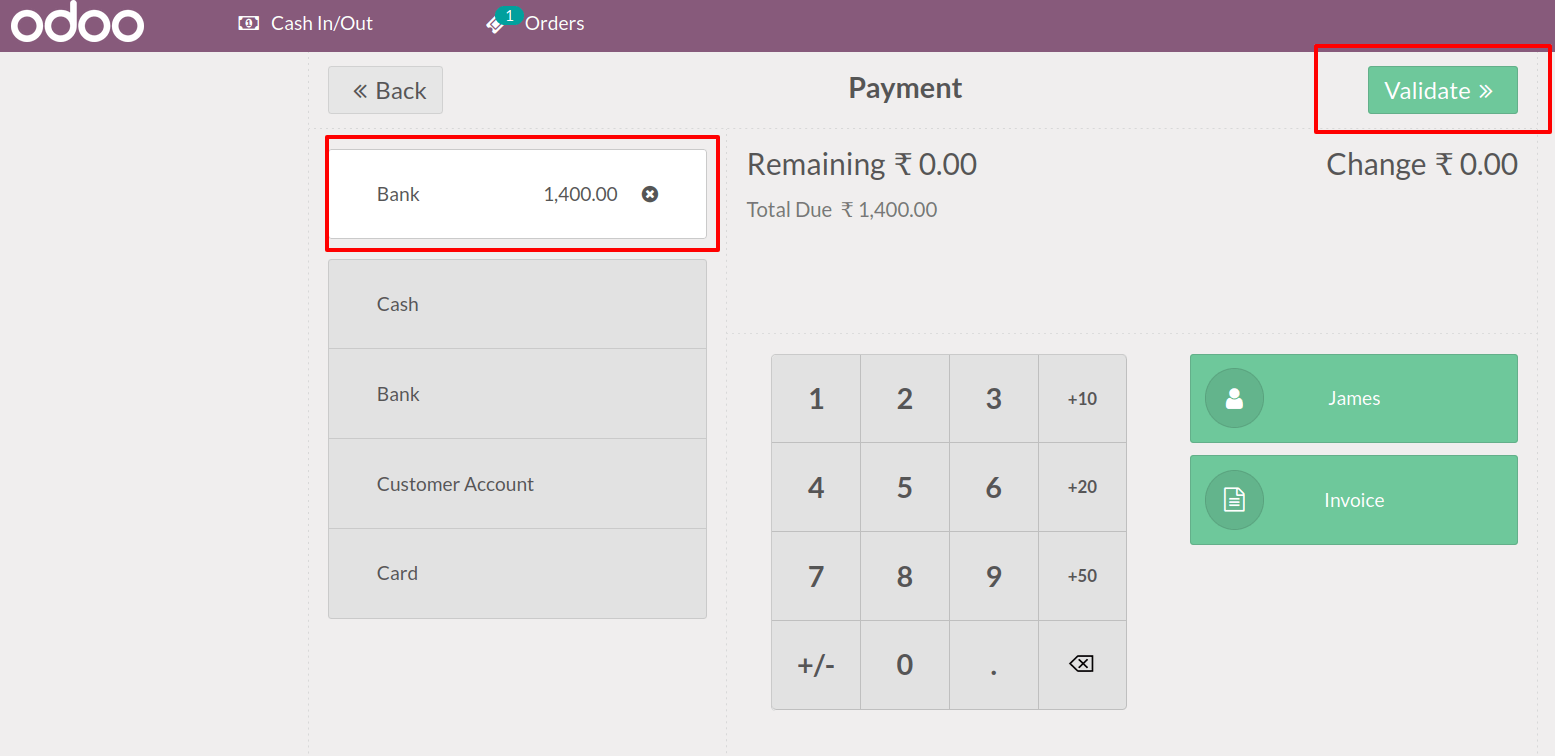
Return to the sale order page and open the order for our customer. There are a smart tab three transfers to PoS.
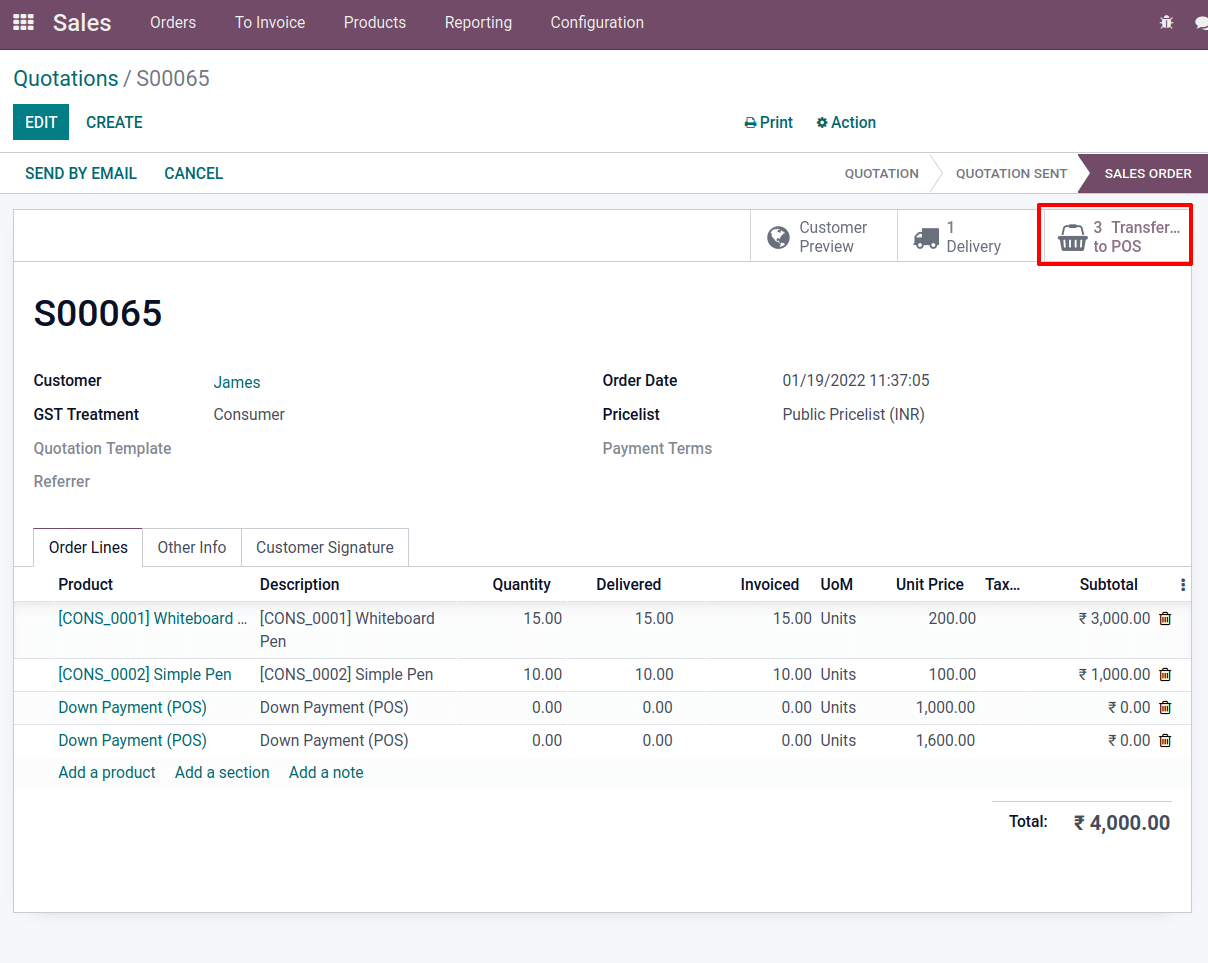
When you access it, you'll see the three transfers that happened during the Point of Sale session. The smart tab displays the order reference, session, date, receipt date, customer, employee, total amount, and payment status.

The down payments were posted, and the full settlement was already invoiced. In conclusion, the Down payment operation of the business can be effectively configured under the POS module of the platform for the retail sale operations.